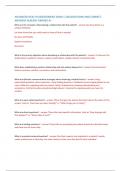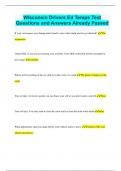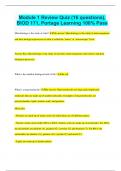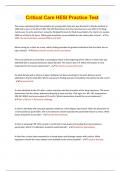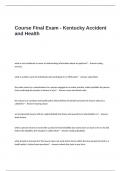Exam (elaborations)
BLG1501 Assignment 2 2025 (225234) Semester 1 - DUE 11 April 2025
- Course
- Basic Biology
- Institution
- University Of South Africa
BLG1501 Assignment 2 Semester 1 2025 (225234) - DUE 11 April 2025 .... 100% TRUSTED workings with detailed answers.
[Show more]






